Trap Doors
SINGLE CATCH TRAP DOORS
(Guillotine or Drop-Style
Doors)
Tip For Using a Single-Catch Door
Guillotine or drop-style doors are called "single-catch" doors because once the trap has sprung (that is, the door has closed) no more animals can enter the trap until it is manually reset. Therefore, it is extremely important that the trap be strategically baited to insure that most if not all of the pigs in a sounder have entered the trap before the door is released.
Single-catch doors are relatively inexpensive and can be easily constructed using 2-inch-by-4-inch and 2-inch-by-2-inch lumber and 3/4-inch thick plywood. With proper prebaiting and game camera footage, single-catch doors can be just as effective at catching pigs as other types of trap doors.
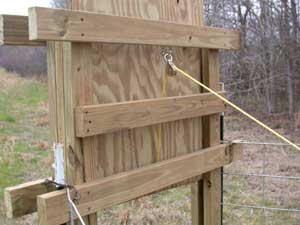 Inside View of a Drop-Style or Guillotine Wooden Trap Door
Inside View of a Drop-Style or Guillotine Wooden Trap Door
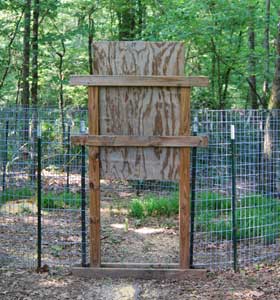 Outside View of the "Poor Man's" Drop-Style or Guillotine Wooden
Trap Door
Outside View of the "Poor Man's" Drop-Style or Guillotine Wooden
Trap Door
MULTI CATCH TRAP DOORS
(Spring-Loaded and Root
Doors)
Tip For Using Spring-Loaded Doors
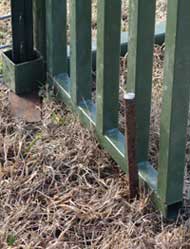 Hog Slammer
Hog Slammer
Prop the doors open and drive a stake into the ground behind both doors. This will prevent springing the trap.
Saloon and rooter doors are designed to allow additional animals to enter the trap once it has been sprung. There are many variations in terms of structural design and materials used for both saloon and root doors; however, doors are usually made of steel — either angle iron or steel tubing (square or circular) or a combination of the two.
Saloon-style doors are equipped with heavy springs that quickly shut the door once the trap has sprung. Rooter-style trap doors simply fall shut. Both types of doors are equally effective, and rarely will a pig be able to run out of the trap before the door closes. Note: Research conducted in the southeastern U.S. suggests that additional captures via multi-catch doors are a rare event.
Spring-Loaded Doors
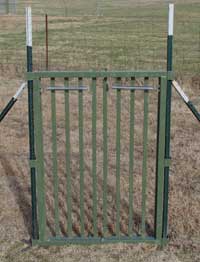 Spring-loaded double doors or saloon-style
doors (A)
Spring-loaded double doors or saloon-style
doors (A)
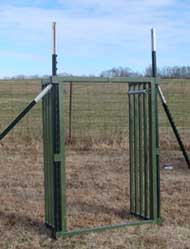 Spring-loaded double doors or saloon-style
doors (B)
Spring-loaded double doors or saloon-style
doors (B)
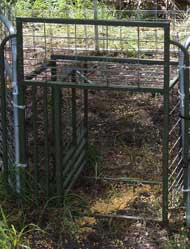 Spring-loaded single door
Spring-loaded single door
Root Door
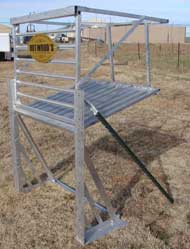
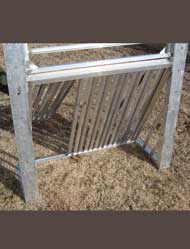 Three-panel root door
Three-panel root door
 The Missouri Trigger system is commonly used with root
doors.
The Missouri Trigger system is commonly used with root
doors.

